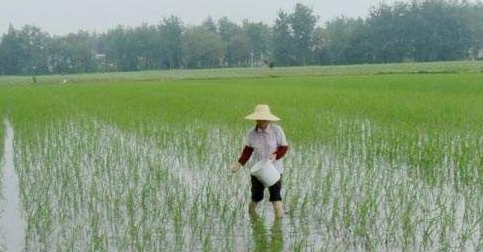The increase in rice production and the scientific application of fertilizer are critical. Fertilization techniques to increase rice yield have the following:
First, the application of organic fertilizer: organic fertilizer is mainly used as the base fertilizer, generally 1500-2000 kg of fertilized mature fertilizer, or 30-40 kg of cake fertilizer, can also apply 2000-2500 kg of human and animal manure before the ploughing.
Second, the control of nitrogen fertilizer: excessive application of nitrogen fertilizer will not only increase the number of ineffective tillers, love green, lodging, increased pests and diseases, but also lead to more empty grains, decreased seed setting rate, affecting rice yield. Nitrogen fertilizer is mainly used as top dressing. Generally, 6-7 kg of urea is applied to the mu after transplanting rice. The second time is 13-5 days after transplanting, and 4-5 kg ​​of urea is applied in combination with the cultivated field to make it strong. In the medium term, it is necessary to pay attention to water control and fertilizer control. Only the second and third types of seedlings with poor growth should be used to supplement some balanced fertilizers. In the later stage, the seedlings should be supplemented with 3-4 kg of grain fertilizer.

Third, pay attention to the application of phosphorus and potassium fertilizer: phosphate fertilizer is suitable for base fertilizer, and potassium fertilizer is better for topdressing. Generally, 20 kg of phosphate fertilizer per acre is applied to the field with sufficient organic fertilizer, and the potassium fertilizer used as the manure can be applied with 3.5-5 kg ​​of potassium nitride per mu. Spraying potassium dihydrogen phosphate in the late stage of rice can promote the filling and firming. Generally, it is sprayed once in the late stage of flowering and flowering, and 150 grams of potassium dihydrogen phosphate per acre is used, and 50-60 kilograms of water is sprayed in the evening.
4. Adding micro-fertilizer: trace elements such as zinc, manganese and boron can improve the supply of oxygen in rice roots, enhance the resistance of rice plants, improve the disease resistance of plants, promote the development of roots in the later period, extend the functional period of leaves, and prevent Premature aging; can accelerate the development of flowers, increase the number of flowers, promote the germination of flower granules, and help to increase the rate of rice emergence; it can also promote the large number of spikes, increase the seed setting rate and the grain filling degree, thereby increasing rice yield. According to the test, in the case of the same cultivation and management measures, the application of trace element fertilizer can increase the production of 40-50 kg per mu, and the production cost per mu increases by about 2 yuan.
Rice is applied with trace elements such as zinc, manganese and boron, and it is generally preferred to spray twice. The first time in the peak period, the second time in the completion of the young spike differentiation. The application rate of zinc, manganese and boron fertilizer is 100-125 grams per mu. The concentration of flushing water is: one thousandth of zinc; the manganese and boron are each five ten thousandths, and the leaves are sprayed on cloudy or sunny afternoons.
Power Chewing Gum,Power Sugarless Gum,Power Mentos Chewing Gum,Power Sugarless Chewing Gum
Soar Biotech Co.,Ltd , https://www.xylitgum.com